Items filtered by date: May 2022
Exercises for Hammertoe
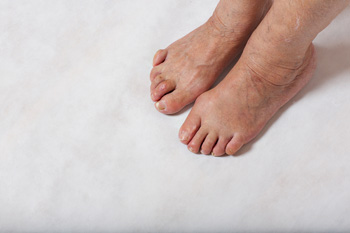
The foot condition that is known as hammertoe is considered to be a deformity. It is a noticeable ailment that affects the toes, and can resemble a hammer. The middle joint of the second toe bends downward, and corns may form on top of the affected joint. The toes are made of muscles, bones, joints, tendons, and ligaments. These vital parts of the toe work together to bend and straighten the toes, and hammertoe can develop if there is an imbalance in the toe structure. It can come from wearing shoes that do not have adequate room for the toes to move freely in, or from shoes that are too tight. Wearing the wrong footwear can squeeze the toes into a bent position. There are some patients who may be prone to developing this deformity that have existing medical conditions including flat feet, or longer toe bones. Relief may be found when specific stretches are practiced, including toe flexion and extension, and performing a foam roll massage. If you have been afflicted with hammertoe, please confer with a podiatrist who can determine the severity of this condition, and recommend correct treatment options.
Hammertoe
Hammertoes can be a painful condition to live with. For more information, contact Dr. Kendall Blackwell from InStride Wilson Podiatry Associates. Our doctor will answer any of your foot- and ankle-related questions.
Hammertoe is a foot deformity that affects the joints of the second, third, fourth, or fifth toes of your feet. It is a painful foot condition in which these toes curl and arch up, which can often lead to pain when wearing footwear.
Symptoms
- Pain in the affected toes
- Development of corns or calluses due to friction
- Inflammation
- Redness
- Contracture of the toes
Causes
Genetics – People who are genetically predisposed to hammertoe are often more susceptible
Arthritis – Because arthritis affects the joints in your toes, further deformities stemming from arthritis can occur
Trauma – Direct trauma to the toes could potentially lead to hammertoe
Ill-fitting shoes – Undue pressure on the front of the toes from ill-fitting shoes can potentially lead to the development of hammertoe
Treatment
Orthotics – Custom made inserts can be used to help relieve pressure placed on the toes and therefore relieve some of the pain associated with it
Medications – Oral medications such as anti-inflammatories or NSAIDs could be used to treat the pain and inflammation hammertoes causes. Injections of corticosteroids are also sometimes used
Surgery – In more severe cases where the hammertoes have become more rigid, foot surgery is a potential option
If you have any questions please contact our office located in Wilson, NC . We offer the newest diagnostic and treatment technologies for all your foot and ankle needs.
Difficulty Walking and Gait Abnormality
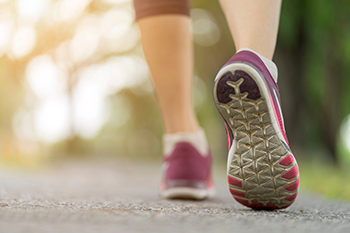
Walking is an activity that as soon as we learn how to do it, we take it for granted. However, sometimes walking can become difficult because of age, illness, injury, or other factors. Symptoms that may develop are shooting pain, numbness and tingling, stiffness, imbalance, weakness, and limping. Types of gait abnormalities include walking with your head and neck pushed forward, walking with legs bent inward, dragging the feet while walking, waddling from side to side, and toes scraping the ground with each step. Among the many causes that can affect your gait are nerve damage, improper alignment of the body, lack of muscle strength and flexibility, inflammatory diseases and conditions, autoimmune deficiencies, injury, and stroke. If you notice an increased difficulty walking and are experiencing any of the symptoms listed above, please consult a podiatrist who can conduct a complete examination and offer an appropriate treatment plan.
If you have any concerns about your feet, contact Dr. Kendall Blackwell from InStride Wilson Podiatry Associates. Our doctor can provide the care you need to keep you pain-free and on your feet.
Biomechanics in Podiatry
Podiatric biomechanics is a particular sector of specialty podiatry with licensed practitioners who are trained to diagnose and treat conditions affecting the foot, ankle and lower leg. Biomechanics deals with the forces that act against the body, causing an interference with the biological structures. It focuses on the movement of the ankle, the foot and the forces that interact with them.
A History of Biomechanics
- Biomechanics dates back to the BC era in Egypt where evidence of professional foot care has been recorded.
- In 1974, biomechanics gained a higher profile from the studies of Merton Root, who claimed that by changing or controlling the forces between the ankle and the foot, corrections or conditions could be implemented to gain strength and coordination in the area.
Modern technological improvements are based on past theories and therapeutic processes that provide a better understanding of podiatric concepts for biomechanics. Computers can provide accurate information about the forces and patterns of the feet and lower legs.
Understanding biomechanics of the feet can help improve and eliminate pain, stopping further stress to the foot.
If you have any questions please feel free to contact our office located in Wilson, NC . We offer the newest diagnostic and treatment technologies for all your foot and ankle needs.
How Can Losing Weight Help My Feet?
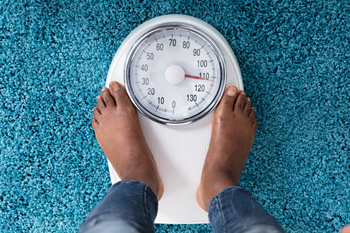
Obesity poses risks to your health, as well as extra pressure put on your feet. With each step you take, your feet must hold one and a half times your total body weight. Painful conditions such as heel spurs, plantar fasciitis, sprains, and fractures can be triggered by excess pounds. Diabetes and peripheral artery disease resulting from being overweight can also contribute to poor circulation and foot ulcers. Symptoms can become severe enough that amputation of a limb is possible. Maintaining a healthy diet and weight can help your general health and the health of your feet. An exercise plan will help in this endeavor. If your feet hurt badly, exercise is still possible with low impact regiments like water aerobics or swimming. It is suggested to consult with a podiatrist before you embark on any new exercise routine to make sure it is safe and will not make foot problems worse.
Obesity has become very problematic at this point in time and can have extremely negative effects on the feet. If you’re an obese individual and are concerned about your feet, contact Dr. Kendall Blackwell from InStride Wilson Podiatry Associates. Our doctor can provide the care you need to keep you pain-free and on your feet.
Obesity and Your Feet
Since your feet are what support your entire weight when standing, any additional weight can result in pain and swelling. Being overweight is one of the main contributors to foot complications.
Problems & Complications
Extra Weight – Even putting on just a few extra pounds could create serious complications for your feet. As your weight increases, your balance and body will shift, creating new stresses on your feet. This uneven weight distribution can cause pain, even while doing the simplest tasks, such as walking.
Diabetes – People who are overweight are at serious risk of developing type-2 diabetes, which has a drastic impact on the health of your feet. As you get older, your diabetes might worsen, which could lead to loss of feeling in your feet, sores, and bruises. You could also become more prone to various infections.
Plantar fasciitis – Pressure and stress that is placed on muscles, joints, and tendons can trigger plantar fasciitis, which is an inflammation of tissue that forms along the bottom of the foot.
If you have any questions please feel free to contact our office located in Wilson, NC . We offer the newest diagnostic and treatment technologies for all your foot and ankle needs.
Are Flip Flops Dangerous to Wear?
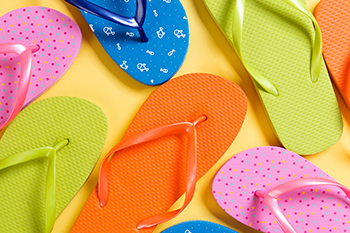
There are benefits that many people enjoy while wearing flip flops. These can include feeling fresh air on the feet, additionally, they are easy to wear, and come in a variety of colors and styles. Despite these benefits, frequently wearing flip flops can lead to specific foot conditions. These types of shoes offer little or no arch support, and can lead to developing plantar fasciitis. The toes can become fatigued from gripping the top of the shoe to keep it on the foot. There is also limited ankle support which may increase the risk of falling. Cracked heels can develop from wearing these shoes that do not have a back or strap. Many people who choose to wear flip flops take shorter steps, and this can lead to altering the gait, or walking style. If you would like more information about the dangers of wearing flip flops, please consult with a podiatrist.
Flip-flops can cause a lot of problems for your feet. If you have any concerns about your feet or ankles, contact Dr. Kendall Blackwell from InStride Wilson Podiatry Associates. Our doctor will assist you with all of your foot and ankle needs.
Flip-Flops and Feet
Flip-flops have managed to become a summer essential for a lot of people. While the shoes may be stylish and easy to slip on and off, they can be dangerous to those who wear them too often. These shoes might protect you from fungal infections such as athlete’s foot, but they can also give you foot pain and sprained ankles if you trip while wearing them.
When Are They Okay to Wear?
Flip-flops should only be worn for very short periods of time. They can help protect your feet in places that are crawling with fungi, such as gym locker rooms. Athlete’s foot and plantar warts are two common fungi that flip-flops may help protect your feet against.
Why Are They Bad for My Feet?
These shoes do not offer any arch support, so they are not ideal for everyday use. They also do not provide shock absorption or heel cushioning which can be problematic for your feet. Additionally, you may suffer from glass cuts, puncture wounds, and stubbed toes since they offer little protection for your feet.
More Reasons Why They Are Bad for Your Feet
- They Slow You Down
- May Cause Blisters and Calluses
- Expose Your Feet to Bacteria
If you have any questions, please feel free to contact our office located in Wilson, NC . We offer the newest diagnostic and treatment technologies for all your foot care needs.
Running and Foot Pain
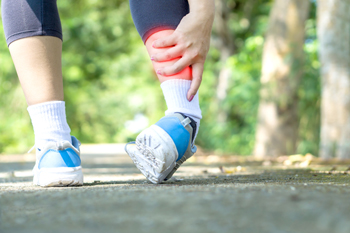
Most runners experience pain in their feet from time to time. While some discomfort can subside on its own, other times more attention must be given to the problem to determine the source and severity of pain. Some causes of foot pain among runners are blisters, a toenail turning black from repetitive activity, and stress fractures. Oftentimes improperly fitting shoes–such as those that are too tight, too loose, or that have insufficient toe box room–are the culprit in running injuries. Beyond careful attention paid to well-fitting footwear, other simple measures that can be taken to prevent runner’s foot pain include using orthotics or running insoles, checking for proper running form, and stretching before and after running. Because runners' injuries can worsen and lead to more severe problems, it is suggested that a podiatrist be consulted if one is experiencing any prolonged foot pain.
All runners should take extra precaution when trying to avoid injury. If you have any concerns about your feet, contact Dr. Kendall Blackwell of InStride Wilson Podiatry Associates. Our doctor will treat your foot and ankle needs.
How to Prevent Running Injuries
There are a lot of mistakes a runner can make prior to a workout that can induce injury. A lot of athletes tend to overstretch before running, instead of saving those workouts for a post-run routine. Deep lunges and hand-to-toe hamstring pulls should be performed after a workout instead of during a warmup. Another common mistake is jumping into an intense routine before your body is physically prepared for it. You should try to ease your way into long-distance running instead of forcing yourself to rush into it.
More Tips for Preventing Injury
- Incorporate Strength Training into Workouts - This will help improve the body’s overall athleticism
- Improve and Maintain Your Flexibility – Stretching everyday will help improve overall performance
- “Warm Up” Before Running and “Cool Down” Afterward – A warm up of 5-10 minutes helps get rid of lactic acid in the muscles and prevents delayed muscle soreness
- Cross-Training is Crucial
- Wear Proper Running Shoes
- Have a Formal Gait Analysis – Poor biomechanics can easily cause injury
If you have any questions, please feel free to contact our office located in Wilson, NC . We offer the newest diagnostic and treatment technologies for all your foot care needs.

